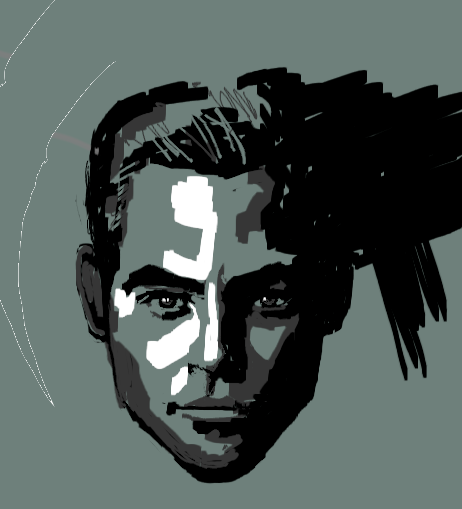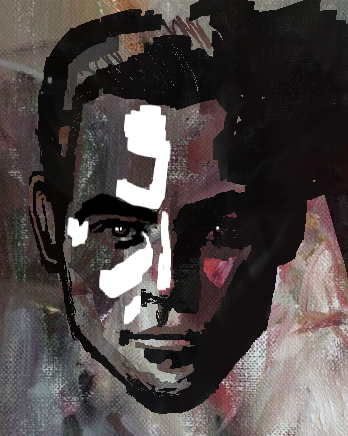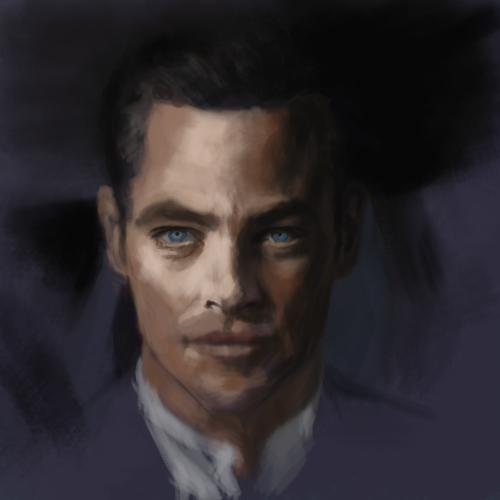02-28-2021, 07:30 AM
@Zorrentos: Thanks my friend - yep - making notes really helps me think back over what I learned and solidify stuff in my head.
@Kassatay: Hey thanks for stopping by and for the encouragement :).
So I've been pressing on a bit with the Craig Mullins Schoolism course. Lesson 2 was about two different approaches to painting:
1. The Graphic Approach: Using a full opacity brush and painting shapes in 4 values from black through to white.
My learnings with this approach:
a. It forces you to be decisive about your shapes.
b. I liked how Mr Mullins showed us how to turn each of the value patterns into selections and paste photos into the shapes to give texture and interest. Not something I'd normally do but useful to keep in the toolbox in case it ever comes in handy.
c. Don't be afraid to use the digital tools to adjust the value levels.
d. You still need to prioritise drawing (placement and proportion) - Mr Mullins keeps on emphasizing.

And this is me playing around with a bit of photobashing an oil painting into the different value patterns:

2. The Glazing And Scumbling approach: Starting off at a middle value with a low opacity brush and making your painting "appear out of the fog".
My learnings with this approach:
a. You still need to prioritise drawing (placement and proportion).
b. You don't have to get it right first time - you can keep on adjusting all the way through the painting.
c. I seemed to be able to get more accurate values and colours with this method.



And here's the ref:

Additional thoughts:
Neither of these approaches matches the way I normally paint and I felt a bit out of my comfort zone but I feel like it is useful to try different techniques as I usually pick up a few useful tips and tricks.
@Kassatay: Hey thanks for stopping by and for the encouragement :).
So I've been pressing on a bit with the Craig Mullins Schoolism course. Lesson 2 was about two different approaches to painting:
1. The Graphic Approach: Using a full opacity brush and painting shapes in 4 values from black through to white.
My learnings with this approach:
a. It forces you to be decisive about your shapes.
b. I liked how Mr Mullins showed us how to turn each of the value patterns into selections and paste photos into the shapes to give texture and interest. Not something I'd normally do but useful to keep in the toolbox in case it ever comes in handy.
c. Don't be afraid to use the digital tools to adjust the value levels.
d. You still need to prioritise drawing (placement and proportion) - Mr Mullins keeps on emphasizing.

And this is me playing around with a bit of photobashing an oil painting into the different value patterns:

2. The Glazing And Scumbling approach: Starting off at a middle value with a low opacity brush and making your painting "appear out of the fog".
My learnings with this approach:
a. You still need to prioritise drawing (placement and proportion).
b. You don't have to get it right first time - you can keep on adjusting all the way through the painting.
c. I seemed to be able to get more accurate values and colours with this method.



And here's the ref:

Additional thoughts:
Neither of these approaches matches the way I normally paint and I felt a bit out of my comfort zone but I feel like it is useful to try different techniques as I usually pick up a few useful tips and tricks.
“Today, give a stranger one of your smiles. It might be the only sunshine he sees all day.” -- H. Jackson Brown Jr.
CD Sketchbook
CD Sketchbook








